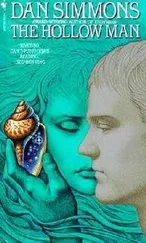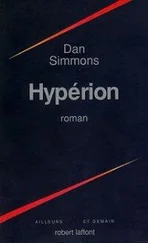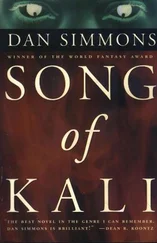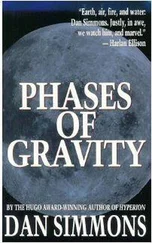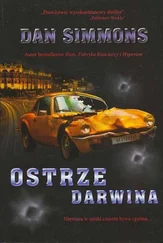As one of the first wealthy Belgian Jews to take the rise of Hitler seriously and then take early action, Monsieur Vanden Daelen Adler’s plan was to get all of his extended family out of continental Europe by October of 1936.
It helped that in 1936 the four most important diamond exchanges in Belgium (of which about 80 percent of the merchants were Jews) united in the Federatie der Belgische Diamantbeurzen diamond federation. Vanden Daelen Adler was elected the first chairman of that federation.
If he’d wanted to, Adler could have easily stolen diamonds or cash for his purposes, but instead he used his own wealth, which was considerable (almost $1 million in 1936, equivalent to more than $15 million today). He had a list of 124 family members whom he thought he could get out of Europe in 1936: the majority of these family members outside of Belgium were in France (from whence his family had emigrated to Belgium in the 1780s), but some were in other European countries, including Germany. Adler saved 85 of them. The rest, for various reasons, refused to leave.
In 1936, immigration laws in England, the United States, and most other countries were designed to keep Jews—even wealthy Jews—out, but Vanden Daelen Adler had been working for three years bribing officials and greasing those rules. Those family members he could not get to England or the United States (where he sent his elderly mother, two sisters, his daughter, his granddaughter, and her future husband), he managed to get to Latin America. Adler did not trust any place in Europe as being safe from the Nazis, and in 1936 he was having second thoughts about England. He did help twelve of his relatives and in-laws gain secret passage to Palestine, although it was a risky trip. Adler later admitted to his biographer that, in spite of his later success as a diamond merchant in the United States, he wished he himself had emigrated to Palestine so that he could have helped create the state of Israel.
Adler’s position as chairman of the Federatie der Belgische Diamantbeurzen in those final months of his preparations for the family exodus helped immensely. No one in Antwerp or Belgium questioned his many trips to England, the United States, or other countries. And—except for some rare stamps—diamonds are the most portable form of wealth known to humankind.
Vanden Daelen Adler would later say that his proudest achievement, after having saved eighty-five members of his extended family (not including himself), was that after doing so, he arrived in the United States with less than a hundred dollars left from his original wealth of almost $1 million. By 1940, Adler’s new diamond business in the United States had regained most of his fortune but he spent a large part of that wealth to buy guns and other weapons for Palestine after the war to help create a Jewish state.
Adler died of a heart attack in 1948, just three weeks after Israel came into existence.

DR. ROBERT ADLER OCHS, born in Denver, Colorado, in 1937, was once quoted as saying, “My profession is physics; my religion is humanity.”
It’s true that Ochs began blending his brilliant career in physics and his ability to explain science to the public at a relatively young age. His first book, The Existential Joys of Physics , became a modest bestseller and an alternate Book-of-the-Month Club selection in 1960, when Ochs was only twenty-three years old. His 1974 book, Mankind and Mystery: Science Looks at the Cosmos , remains one of the top five bestselling popular science books in publishing history. In the late 1970s, Ochs’s discursive, almost casual BBC series Man, Mystery, and Science , using Jacob Bronowski’s technique (from his series The Ascent of Man ) of just chatting conversationally while stepping from place to place around the world to look into the history and humanity of physics and other science through the ages, was—Dr. Carl Sagan once admitted—one of the prime inspirations for the later hit American series Cosmos.
Of the nine books that Robert Ochs published during his decades as a working physicist and science populizer, the one he admitted to being most proud of was a small, privately published and circulated volume entitled Conversations with My Tunkašila. In this little book, Ochs told of the “summer vacations” from the time he was fourteen until he was twenty-two that he spent visiting his Oglala Sioux great-grandfather in the Black Hills of South Dakota. In the early years, the two would go camping together, despite his great-grandfather’s advanced age.
Conversations with My Tunkašila created quite a stir among some of Ochs’s academic friends around the world, since—besides long discussions about Lakota beliefs and attitudes about courage and life—the physicist’s elderly “tunkašila” had explained how knowledge of astronomy had given his Sioux peoples what the old man called Wakan Waśt’e, “ the cosmic powers of good.”
The old man had described new constellations hidden within known constellations, such as Wi˙cin˙cala śa¸kowin , “The Seven Little Girls,” and how, when that constellation reached a precise point in the summer sky, the Natural Free Human Beings would gather at HiNan ¸Ka˙ga Paha , Harney Peak in the Black Hills, to welcome back the Thunder Beings. Ochs also cited his tunkašila on how to find and track the movement of the oval constellation Lo INaN¸ka O˙caN¸ka , the Race Track, and telling of how his people would, when Lo INaN¸ka O˙caN¸ka reached a precise position in the spring sky, gather together at Pe śia , the spiritual center of the Black Hills (a location the old man would not reveal, but which Robert Ochs hinted was where his beloved tunkašila had built his cabin), for what Ochs’s Lakota great-grandfather called the O¸kiśat’aya wowaĥwala , or “Welcoming back all life in peace.”
There were dozens of other astronomical observations, all relating to specific geographic points such as Devil’s Tower in Wyoming (where the summer solstice was celebrated) to Bear Butte in South Dakota to various former winter camps of the Natural Free Human Beings in Nebraska and western South Dakota. Each celebrated a subtle shifting of certain stars within known constellations and each was tied to some ancient ceremony. But what astounded the astronomers who read Ochs’s privately distributed book was that his old great-grandfather had revealed cosmologies and levels of astronomical observations known by the Plains Indians that had never been guessed at by ethnographers, historians, or scientists.
And everything in the night sky and on earth, as young Robert Ochs’s tunkašila revealed, was connected, more than symbolically or ceremonially, with what the old man called the CaNgleś¸ka Wakan , or “Sacred Hoop.”
Scientists in a dozen fields, who had long been sure that the Sioux, Cheyenne, and other Plains tribes had had no serious astronomy, were forced to revise their beliefs and textbooks based on Dr. Ochs’s short little privately published book.
It was in the last summer that Ochs visited his so-called tunkašila , when Robert was twenty-two years old, that he published his revolutionary doctoral thesis, Revised Variations in Velocity Shear Induced Phenomena in Solar and Astrophysical Flows Due to Quantum Effects. He dedicated the thesis to his great-grandfather.
Dr. Ochs retired in 2007, at the age of seventy, and is currently a professor of physics emeritus at Cornell University and a leading consultant on the James Webb Space Telescope, the successor to the Hubble telescope that will go into solar orbit far beyond the moon, currently scheduled for launch no earlier than 2013.
Читать дальше



